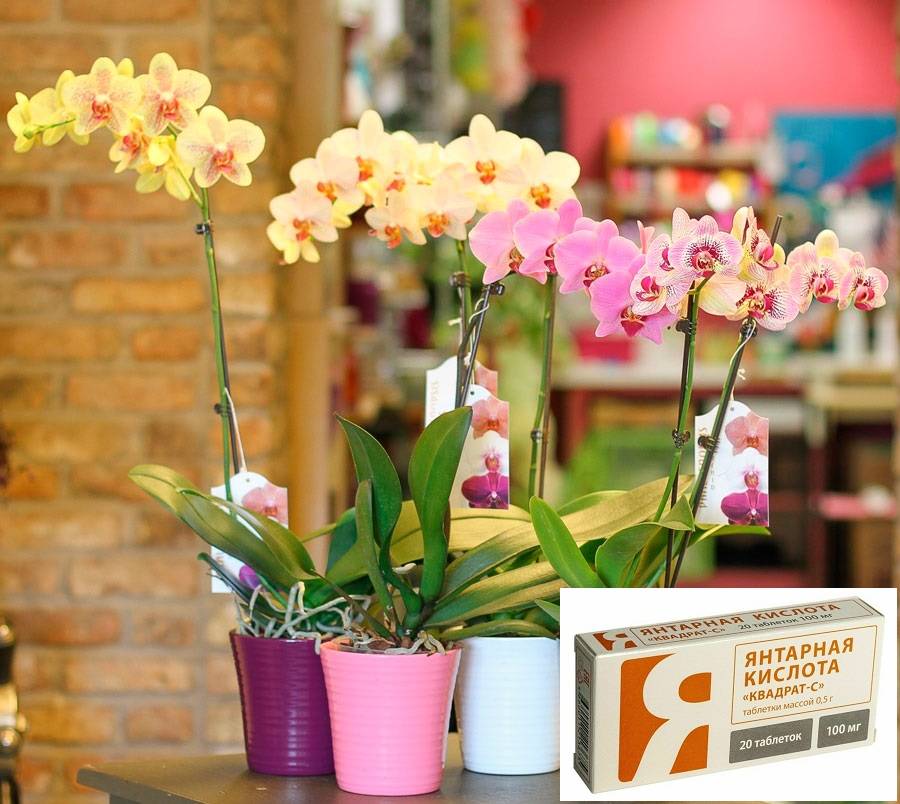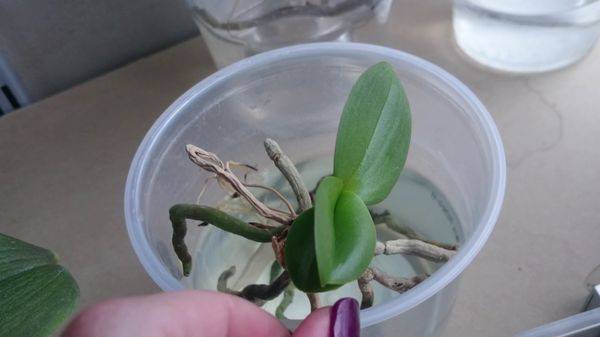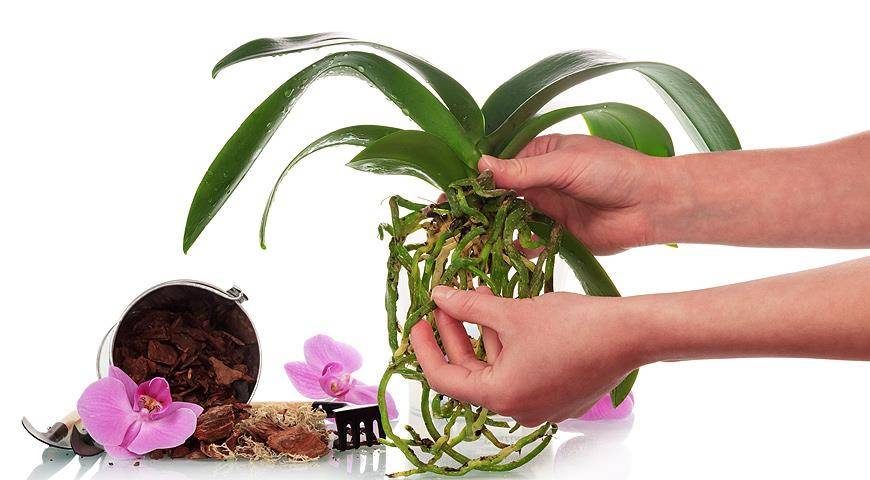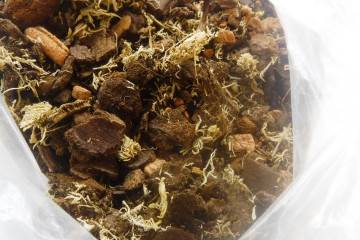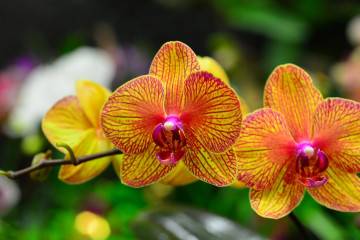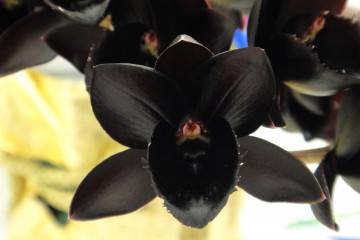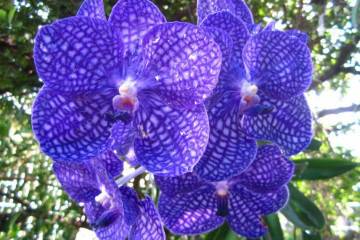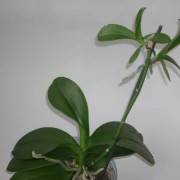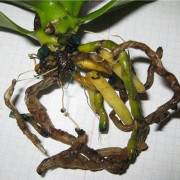Succinic acid for orchids - application
Content:
Many flower growers know a miracle cure called "succinic acid". Orchid growers almost always have this inexpensive preparation on hand. Having learned how to use it correctly, you can greatly facilitate the cultivation of indoor flowers. Even as capricious as the gentle phalaenopsis.
Acid properties and what it is used for
You can buy a substance that has a crystalline form at a pharmacy or in specialty stores for gardeners. Dissolving acid in water, it can be used for the purpose of:
- reanimate the orchid after transportation or transplantation;
- stimulate the cellular nutrition of a plant affected by heat (or frostbite);
- to provide preventive protection of the flower from the negative effects of external factors;
- accelerate the growth of the flower and improve its appearance;
- increase the intensity of root development;
- improve the quality of the soil;
- enhance the beneficial effects of fertilizers;
- activate the processes in cuttings leading to rapid rooting;
- achieve the onset of the orchid flowering period, as well as extend it.
Succinic acid for orchids is simply irreplaceable. Whimsical phalaenopsis with the help of it quickly recover from any illness or stress, they again begin to release arrows and bloom.
How to dilute succinic acid for orchids
Practice shows that acid acts most effectively on plants in the form of an aqueous solution. Dilute it in the ratio: 1 gram of powder to 0.5 liters of water.
The prepared composition can be used to process healthy plants. If it becomes necessary to help a sick or weakened flower, the same amount of acid is stirred in 250 ml of water.
The required dosage of the product can be measured using a kitchen knife. At its tip, just as much substance will fit as needed.
How to prepare a composition from tablets
Having bought succinic acid for orchids in tablets, you should figure out how to use it in this form. To the described procedure, only the need to crush the tablet before filling it with water is added. This can be done with a hammer or mortar.
Acid diluted in water should be applied within 2 days, keeping in a cool dark place. It is most effective freshly prepared.
There is also a water-soluble acid concentrate. How to properly breed the Yantarin VRK for orchids and feed them flowers, the manufacturer specifies in detail on the package. A 100 ml vial is usually equal to 2 dry matter tablets. Detailed instructions do not allow ambiguous interpretations, so any fan of indoor flowers will easily figure it out.
Seed treatment
By soaking orchid seeds before planting in an acid solution, you can achieve better germination.
The seed is kept in a nutrient medium for 12 hours, after which it is dried and sown, observing all the rules for planting a flower.
Soaking roots
The transplant procedure is always associated with a certain stress for phalaenopsis. To mitigate its effect, the roots of the plant are soaked in a solution of succinic acid, following the steps below:
- The roots of the flower are carefully examined and any that show signs of rot or damage are removed.
- Mix the solution of the required concentration (for a healthy or treatable orchid).
- The roots are placed in a solution (a healthy flower - for 30 minutes, a sick one - for 2-4 hours, but no more).
- Take the flower out of the solution and leave it with open roots for 2-3 hours so that they "breathe".
- The plant is planted in a previously prepared disinfected pot and soil.
The results of such a procedure will be visible almost immediately. The plant will look healthier and may even bloom.
Application for processing leaves
It is also recommended to occasionally wipe the orchid leaves with an acid solution. This is useful not only when the flower is sick, but also as a routine care activity. They do it as follows:
- Prepare the solution in the correct proportion.
- A piece of gauze or cotton wool is moistened in diluted succinic acid.
- Wipe the leaf plates on both sides, but so that excess liquid does not accumulate at the base of the leaves.
You can also spray the flower with this product. For medicinal purposes, treatment is allowed every other day, and for preventive purposes - once a week.
For watering and feeding
For watering orchids with a solution of succinic acid, a watering can with a long spout is used. Fertilizer is poured into the pot slowly so that all the soil can be saturated with it. When moisture begins to seep through the drainage holes in the bottom, watering is stopped. Excess liquid is removed from the pan.
If the flower is grown in a glass container without holes, then you can remove excess liquid after 15 minutes. The flask is gently tilted, holding the root collar with your hand so that the liquid dressing can drain off.
It is also possible to feed the flower by submerged irrigation. To do this, the flower is kept in solution 1-2 times a month for half an hour. The only exception is the time of flowering and rest of the plant.
Use for resuscitation of orchids
Sometimes it can happen that due to errors in the care of the flower, most of the roots die. In this situation, you can resort to several methods of using succinic acid:
- Spraying. The concentrated solution is sprayed with a spray bottle on the shoots, leaves and neck of the flower. The procedure is repeated daily until new root processes begin to form. At the same time, the solution must be fresh, since after a while it loses its healing properties.
- Immersion. Diluted in a standard dosage, the solution is poured into a transparent vessel with a sufficiently wide neck for the roots of the flower to pass through. The orchid is dipped in liquid to the level of the neck, which should remain on the surface, and fixed in this position. The plant is exposed in a well-lit place in a moderately warm room and kept in such conditions until new roots appear. Once every two days, a fresh portion of succinic acid is poured into the container.
- Petiole processing. This method is used when the plant has practically died, but the stems not damaged by the disease remain from it. These petioles, with the help of succinic acid, can grow new viable roots.To do this, a cut of the stem is dipped in the agent previously crushed to a powdery state. Further, the petiole is placed in a transparent vessel with holes for ventilation, filled with a substrate familiar to a flower. The reanimated plant is alternately watered and sprayed with a healing composition until its roots grow.
You should not expect an effect that is too quick. The duration of treatment can be up to 2-3 months. A flower transplant is carried out only after the length of the root processes has increased by at least 5 cm.Phalaenopsis is transplanted according to all the rules, using a sterile pot and a substrate suitable for orchids.
Contraindications and precautions
Although the substance is nearly harmless for domestic use, it is recommended that standard safety requirements be followed. These include:
- protection of mucous membranes and respiratory tract with a mask;
- obligatory use of gloves and glasses.
In case of contact with eyes, rinse thoroughly with running water as soon as possible. Sometimes an allergic reaction can occur to the drug, which can be dealt with by a qualified doctor.
Store the substance in a well-closed container, away from places where children or pets can find it.
Succinic acid has managed to prove itself well in floriculture. It does not harm plants, it is absorbed in the required quantities, and does not accumulate in the substrate. If you regularly fertilize orchids with this tool, then you can succeed when growing them at home.
